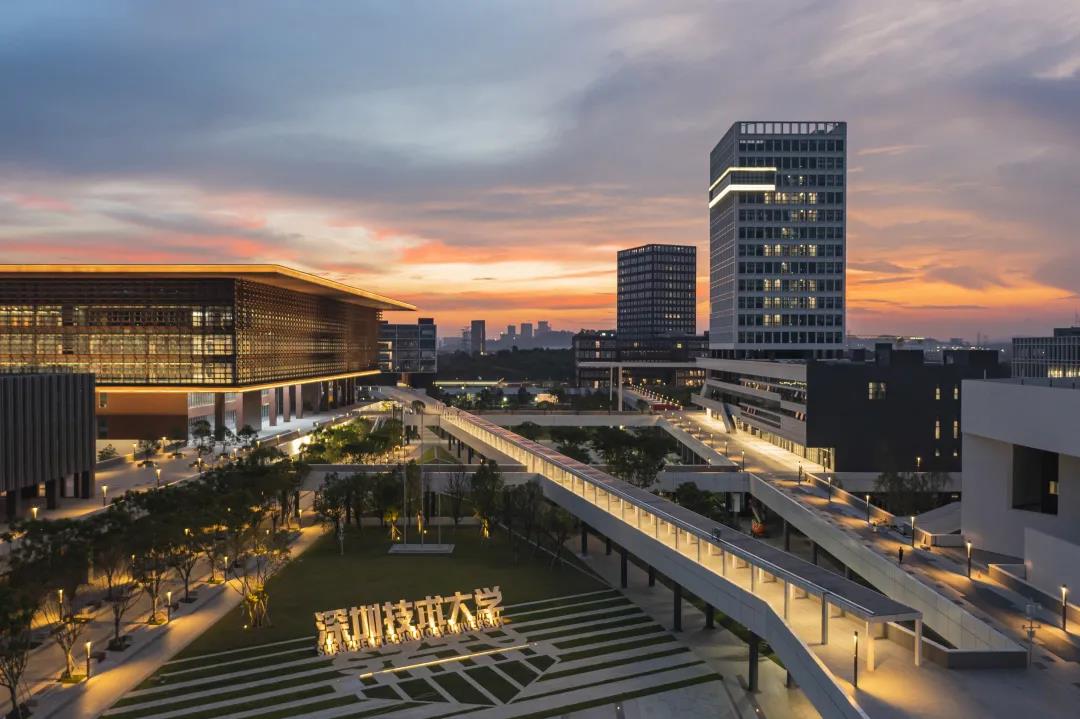On March 31, the International Academic Forum on Art and Technology in the Digital Era was successfully held at Shenzhen Technology University (SZTU). The event was jointly organized by College of Innovation and Design as well as College of Big Data and Internet and co-organized by Pingshan Artist Association.
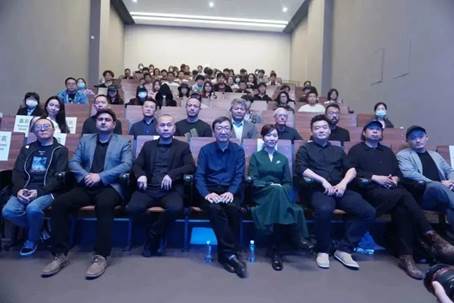
Group photo of the speakers and audience [Photo/College of Innovation and Design]
Nowadays, the relationship between art and technology is more intertwined than ever before. The boundless imagination of art has opened up new possibilities for technology, while technology has expanded the potential for diverse artistic expression. Experts and scholars from home and abroad gathered together to exchange ideas and provide new insights for Shenzhen’s cultural and technological industries, which will promote technological innovation and cultural development in Shenzhen.

The International Academic Forum on Art and Technology in the Digital Era is held. [Photo/College of Innovation and Design]
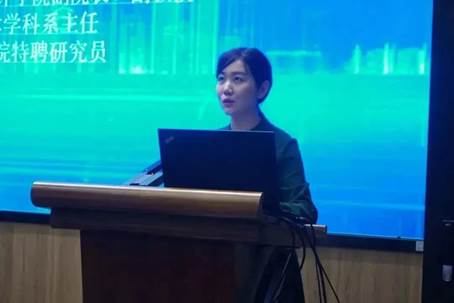
Associate Prof. Hu Jingxuan, deputy dean of the College of Innovation and Design, head of the Department of New Media Art and distinguished researcher at China Academy of Art [Photo/College of Innovation and Design]
Associate Prof. Hu Jingxuan, deputy dean of the College of Innovation and Design, delivered the opening remarks and expressed her gratitude to the guests as the forum planner. She discussed the combination of art and technology in the digital era and the trend of new media art. She pointed out that the integration of art and technology is a source of inspiration for the creativity of contemporary artists. By utilizing cutting-edge technology to produce their art, new media artists can demonstrate human empathy and artistic contemplation, expand the viewers’ perspective, and revolutionize the visual encounter for their audience. As the “City of Innovation” and “City of Design”, Shenzhen enjoys rich new media elements and technological support, which provides a good atmosphere for creation by integrating art with technology. The forum serves as a good communication platform for understanding the current development of the latest technology and discussing the trend and the evolution of art and technology from an international perspective.
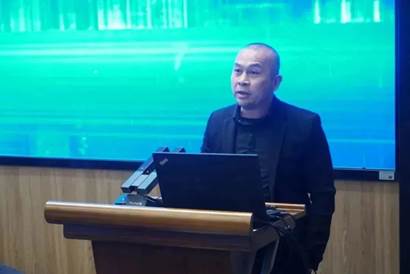
Feng Xiaorui, deputy curator of Luohu Art Museum, contemporary artist [Photo/College of Innovation and Design]
The academic host of the forum Feng Xiaorui expressed his gratitude to the organizers. He noted that the relationship between art and technology is mutually reinforcing and several glorious eras throughout history have witnessed their integration. In modern society, technology has provided artists with new mediums of communication and ways of creation. He also emphasized the important role of technology and innovation in the development of SZTU and the College of Innovation and Design. Feng envisioned a closer integration of art and technology to address societal challenges, and proposed the establishment of a college of innovation and design with this purpose in mind.
Following the introductory statements, four distinguished speakers presented their keynote addresses.
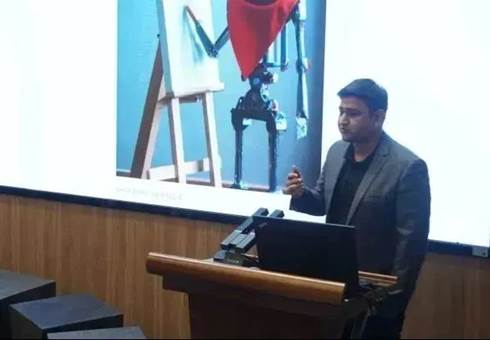
Haseeb Hassan, associate researcher at College of Big Data and Internet at SZTU, reviewer for several well-known journals; research interests: application of machine learning in CT medical imaging [Photo/College of Innovation and Design]
Dr. Haseeb Hassan, associate researcher at College of Big Data and Internet at SZTU, discussed the application of digital art and AI in the field of art. He explained what digital art is and how it is generated, as well as the significance of AI in the creation of art. He also discussed the controversial issues that AI creation may face now and how to deal with these challenges. Finally, he offered his thoughts on achieving a balance between human and AI involvement in the field of art. He called for the scientific community to address these challenges while maintaining a balance and connection between humans and AI.
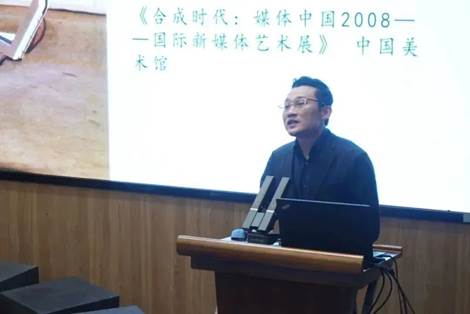
Duan Jun, art critic, curator, deputy secretary-general of the China Annual Art Critics Assembly, researcher of the Institute of Contemporary Art of the China National Society for the Promotion of Arts and Culture [Photo/College of Innovation and Design]
Duan Jun, deputy secretary-general of the China Annual Art Critics Assembly shared his experience of researching Chinese contemporary art and curating exhibitions, as well as his critical attitude towards new media art. He contended that Chinese contemporary artists demonstrate remarkable intensity and depth in their works, particularly in the areas of installations and videos. However, he argued that new media works in China lack sufficient technological advancement. Financial and technical support are necessary to enhance the integration of high technology into artworks in China. At the same time, he noted that numerous Chinese new media artworks created in the last two decades have been overly simplistic, lacking in profound expressions and explorations of human nature. Finally, he pointed out that more technology should be introduced to promote the development of new media art.
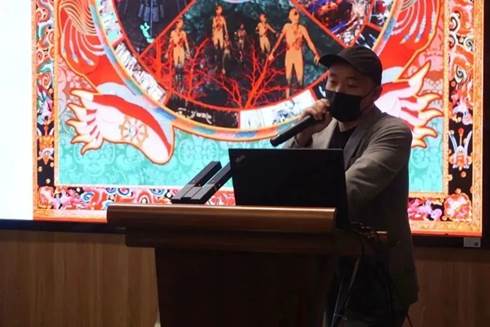
Gao Jiangbo, curator, art writer, graduated from Musashino Art University, active artist in various art scenes in China and Japan [Photo/College of Innovation and Design]
Drawing on Deleuze’s philosophy, curator Gao Jiangbo suggested that the logic and commonality of art and technology lie in rebellion. The emergence of photographic technology inspired Impressionism. Art provided a referential vision for technology and established a new order and technology in rebellion, while modern art developed in reflection and rebellion. At the same time, he explained the relative relationship between technology and art in different social states and shared some emerging art forms and trends. He believed that society could be reconceptualized and reconstructed in an innovative way to explore the possibilities of the future. Gao thought the intersection of technology and art will reach a pinnacle, as exemplified by the thought experiment presented in the film, The Matrix.
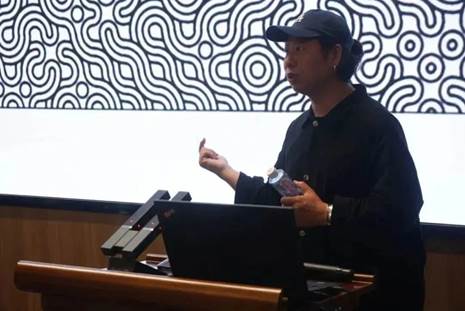
Zhou Yuan, director of BananaJam Art Space, curator, artistic director of Matrix Design [Photo/College of Innovation and Design]
Zhou Yuan, director of BananaJam Art Space, said that artists enjoy a high degree of freedom to create and can decide the direction of the works in their hands like God. The rapid development of technology should be used for art and human beings, bringing more freedom rather than restrictions. Art and technology are two parallel lines, but there are crossover parts in art creation. Logic, intuition, knowledge and creation are all possibilities for innovation. He believed that AI painting is both generative and destructive: it can not only create new art forms, but also overwrite the exploratory nature of art and break down traditional art forms and techniques. Finally, he pointed out that the manual creation of art by humans with emotion will bear more values and is ultimately different from computer-generated paintings.

a. Ken Malson, b. Lele Fioroni, c. Gu Zhenqing, d. Zhang Lin, e. Ding Yanguo, f. Wang Zhixin, g. Li Hongbo [Photo/College of Innovation and Design]
Following the keynote speeches, additional attendees participated in the discourse. Ken Malson, a Texan artist and former president of both the Texas Sculpture Association and the Association of Promotional Glass Artists, presented the rapid development of modern art and technology and illustrated that we are now at the best time to merge art and technology. Lele Fioroni, Milanese painter and designer, presented his imaginative and colorful artworks, showcasing the allure of merging abstract art with technology. Gu Zhenqing, curator and guest professor of Guangzhou Academy of Fine Arts, expressed excessive technological development on both art and humanity. He called for a reflection on our reliance on technology and advocated for new laws and regulations to restrain its excessive development. Zhang Lin, artistic director of Lansing Art Center, has had a diverse career, having worked as a police officer, advertising director, and now as an artistic director. His persistence and pursuit of art brought him closer to art step by step, and his rich life experience made him more tolerant to the integration of art and technology. Ding Yanguo, guest professor at SZTU, president of Shenzhen Traditional Chinese Realistic Painting Society, vice president of Shenzhen Youth Artist Association, and chairman of Shenzhen Pingshan District Artists Association, explained how the traditional Chinese realistic painting exhibitions have been revitalized with modern technology, and how eye-opening it was to combine technology and traditional art. Wang Zhixin, artist and the founder of Wangshi Art Gallery, talked about how art and technology are integrated in the exhibitions curated by his gallery. Li Hongbo, director of FENART Studio, shared his various design cases, which were well integrated with technological elements.
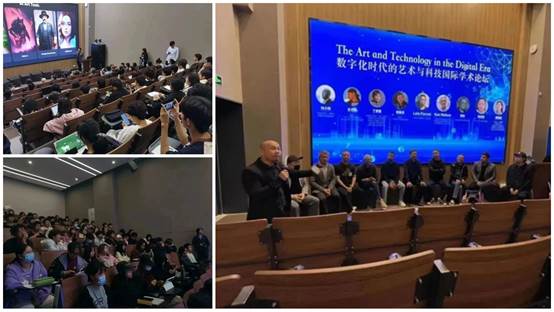
The forum attracts many teachers and students. [Photo/College of Innovation and Design]

Prof. Huo Yuda gives a concluding speech. [Photo/College of Innovation and Design]
At the end of the forum, Prof. Huo Yuda, dean of College of Innovation and Design at SZTU made a concluding speech. He emphasized some keywords in this forum including “digitalization”, “art” and “technology”, and suggested that we should reflect on the impact of technology on art and design. With the rapid development of technology and artificial intelligence, AI may eventually become entirely independent from human thought and perception. People should be alert to the industrial direction that are greatly influenced by technology. Prof. Huo also proposed that the difference between humans and AI lies in the affection between individuals. What we are exploring is the combination of and tolerance for art and technology in society. “Both art and technology serve people, and artists should not forget their original intention.”
The forum gave the audience an insight into the frontiers of science and technology and the relationship between technology and art from multiple perspectives shared by artistic professionals, researchers, etc. The evolution of art and technology in the digital era will be further discussed by using art as the language and technology as the medium.
Drafted by Yang Jiaqi, Luo Mengni/College of Innovation and Design
Revised by International Cooperation & Student Affairs Office
Edited by International Cooperation & Student Affairs Office
